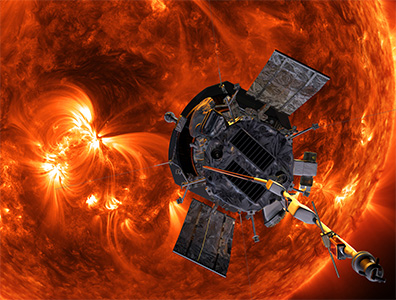Our Sun, a colossal ball of churning plasma, is a place of constant activity. One dramatic phenomenon is the Coronal Mass Ejection (CME), a colossal eruption of charged particles and solar wind that hurtles through space at incredible speeds. Understanding CMEs isn’t just about scientific curiosity; it’s vital for unlocking the Sun’s secrets and safeguarding our technological infrastructure from its disruptive power.
A Daring Mission Gets Blasted: Parker Solar Probe Faces the CME Gauntlet
NASA’s Parker Solar Probe (PSP), launched in 2018, embarks on a daring mission unlike any other. As PSP ventures closer to our star than ever before, it confronts the Sun’s wrath in the form of CMEs head-on. A recent study, published in The Astrophysical Journal, sheds light on the incredible data collected by PSP over four years, focusing on its encounters with a staggering 28 of these celestial storms.

Cracking the CME Code: Key Findings from the Study
Dr. Tarik Mohammad Salman, the lead author of the study, explains the driving force behind this research: “The PSP science data is a treasure trove of information, offering us direct measurements of the solar wind at distances from the Sun that we’ve never been able to probe before.” The study aimed to compile a catalog of CMEs observed by PSP between 2018 and 2022 and analyze how these CMEs transform as they travel farther from the Sun.
The analysis yielded several significant findings that challenge our current understanding of CMEs. Dr. Salman highlights a few key takeaways:
- Evolving Complexity: The internal magnetic structure of CMEs was observed to become progressively more intricate as they traveled farther from the Sun. This unexpected discovery suggests that CMEs undergo a significant metamorphosis during their journey through space, posing a challenge to current models that often depict them as simpler structures.
- Magnetic Field Strength: The study revealed that the CME magnetic field weakens at a slower rate than previously thought. This has implications for the impact CMEs can have on planets and other objects in their path. A stronger magnetic field could lead to more extensive disruption of magnetospheres, the protective bubbles surrounding planets like Earth.
- Expansion and Fluctuations: The expansion of the CME was found to be a critical factor in the formation of the compressed region ahead of it, while the internal magnetic field influenced the small-scale fluctuations observed within this region. These findings provide valuable insights into the internal dynamics of CMEs, which can ultimately help us predict their behavior more accurately.
These results not only validate existing models but also raise new questions that warrant further investigation with a more robust dataset in the future. The Parker Solar Probe mission is expected to continue collecting vital data for several more years, providing scientists with the opportunity to refine our understanding of CMEs.
Stay tuned for the next chapter!



















